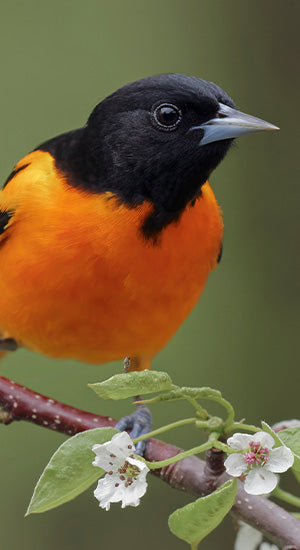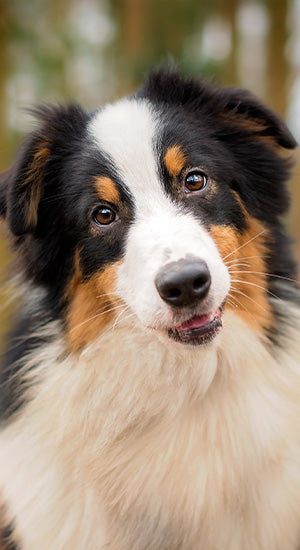Hay Cuttings – Fact VS. Fiction

HAY CUTTINGS – FACT VS. FICTION
February 22, 2023
Dr. Micah Kohles, Chief Veterinary Officer, Compana Pet Brands
If you’re a bunny mom, guinea pig dad, or anybody who purchases hay on a regular basis for your little one, you’ve probably become a little bit of a hay connoisseur. And along that way, you’ve probably either purchased or heard a little bit about different hay cuttings.
Today, I want to take the opportunity to provide some education about hay cuttings and help you understand the implications to what it means in terms of the hay quality characteristics, as well as the nutritional factors. Most importantly, I want to take some time to help you separate fact from fiction.
What Are Hay Cuttings?
So, what are hay cuttings? In order to understand myths versus reality, let’s spend a little bit of time helping you understand the science of how hay grows and how that relates to cuttings.
Hay is a crop that can be harvested multiple times a year, and no matter what type of hay we’re talking about (whether that be cool season grasses like Timothy and Orchard, warm season grasses like Bermuda, or even legumes like Alfalfa), all hay is naturally harvested at different points during their maturation cycle.
When we talk about cuttings, that’s simply assigning a number to represent when the hay was harvested. First cutting would be the first time the hay is harvested each year, whereas second cutting would be the second harvest. It’s most common to get one to two cuttings, and rarely with some grasses, we will get a third cutting.
Which Hay Cutting Is Most Nutritious For Small Pets?
So one of the most common questions that I get as a veterinarian is, “what cutting is most nutritious or most appropriate for my animal?” Whether that be a young rabbit or older guinea pig, is there a difference between first, second, and even third cutting that aligns to a specific nutritional need? The reality is that there is no scientific research that validates that certain cuttings of hay are more appropriate for certain age related issues or certain disease conditions such as GI disease or dental disease.
Is 2nd Cutting Hay More Premium And Higher Quality Than 1st Cutting?
Another claim I occasionally hear from pet parents is that second cutting hay is a higher quality than first cutting. Well, the truth is that’s really a myth, a little bit based on consumer perception, and unfortunately there is some marketing out there that really aligns that second cutting is better.
There can certainly be differences between first and second cutting, and sometimes second cutting can be a little bit softer and greener. But when we really get down to the root of it, what we want to focus on is the maturity of the hay.
When evaluating hay, there are different physical structures that we look for, whether it’s leaf-to-stem ratio, the side of the seed head, or maturity. If we evaluate those physical characteristics, and, most importantly, align those to the nutritional factors that we are after, cutting really isn’t a primary differentiator and not something you should make your purchase decision based on.
Is It True That Adult Pets Prefer 2nd Cutting Hay?
Another common question or claim is that adult animals prefer second cutting hay. Regardless of cutting, what it really comes down to is your individual animal’s preferences. Some animals prefer hay that is slightly coarser, a little bit more mature, a little bit crunchier, whereas other individuals prefer a little bit softer hay. It is not truly about cutting, it’s about those physical characteristics that your animal would prefer.
What we really want to focus on is ensuring that (independent of cutting) we are getting that soft leaf, that tender structure, that beautiful aroma, and making sure that that aligns to the right nutritional characteristics to feed the microbiome in their hindgut.
Why Is Hay Maturity Important?
As you can imagine, we’ve invested a great deal of time and energy at Oxbow to understand what are the nutritional and physical characteristics of hay that is most appropriate and preferrable for small herbivores. What we’ve learned over decades of experience is the importance of harvesting hay at an early stage of maturity. Harvesting hay early in the growth cycle allows us to ensure the specific physical and nutritional characteristics we require, in every single bag, independent of cutting.
What Is Special About Oxbow’s Hay Quality Process?
So we’ve spent a lot of time talking about the nutritional characteristics and the physical characteristics that we know align to what’s best for the small herbivore. At Oxbow, what we realized really early on is that once that hay leaves the field, there are still a host of factors that we can control in order to improve and add value to the hay.
With our decades of knowledge and experience, we’ve developed what we call our Extra Acre Hay Quality Process. This again starts in the field with the quality evaluations that we do there, but it follows the hay all the way through the packaging and into that final package. It’s about not simply buying hay, it’s not simply looking at hay in the field, but really understanding what we can control as we move that through our quality system. There are four central pillars to Oxbow’s Extra Acre Quality Process.
Ongoing Research And Consulting
So pillar number one for us is our ongoing research and consultation with hay growers. We are continually looking at what research is being published and what information is out there to improve our ability to cultivate healthier fields and more nutritious hay for small animals. We dedicate significant time, effort, and money to researching quality factors that impact the pet’s total well-being. Our forage experts work hand in hand with researchers and growers, and continue to learn and evolve the way that we grow and package hay.
Committed Presence Out In The Fields Year-Round
Pillar number two is our committed presence in the hay fields year around. By constantly having boots on the ground, we’re able to evaluate the growing characteristics of hay, the environmental conditions, as well as what the soil conditions are – all of which impact the quality characteristics of the hay. This allows us to understand what’s going on in mother nature and how we can utilize science to improve the quality of that hay. We employ farmers as part of our forage sourcing team to ensure that we’re sourcing only the best hay, from the best farmers, in every given year.
Hay Assessment & Scoring
Pillar number three is focused on our assessment and our scoring of hay. Before we ever buy hay, we understand what’s been going on as part of that growing process. Our sourcing team evaluates that hay in the field and in the bale to collect samples, scoring it on a variety of factors: color, aroma, leaf-to-stem ratio, and other quality characteristics. In addition, we’re sampling that hay and submitting it for third-party testing to evaluate a diversity of nutritional factors, including fiber, protein, and other nutritional characteristics that we know are paramount for the health and wellbeing of small animals.
Once back at Oxbow, the hay undergoes another round of sampling to further validate that scoring and assessment that was done in the field, as well as to validate the third party nutritional testing. All that analysis in totality allows us to know that we’re putting the most consistent, most nutritionally appropriate hay in the package, every single day.
Hay Sorting & Packaging
And, finally, pillar number four – sorting and packaging of hay. We use a variety of custom-built technologies that we’ve developed over decades of packaging hay to softly separate the bale and gravity sort and de-dust the hay through multiple processes before it is hand-sorted and hand-packaged by a real person who has a commitment and a passion for what they do.
Species, Rabbits, Guinea Pigs, Health & Nutrition, Chinchillas
Exotic Wings Newsletter
Keep up to date with store news, sales & events, and never miss another blog post!










